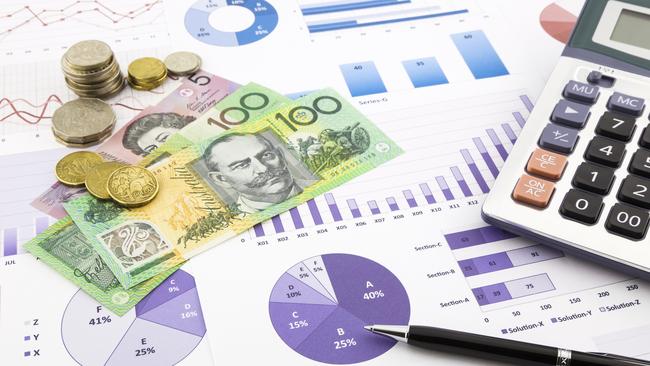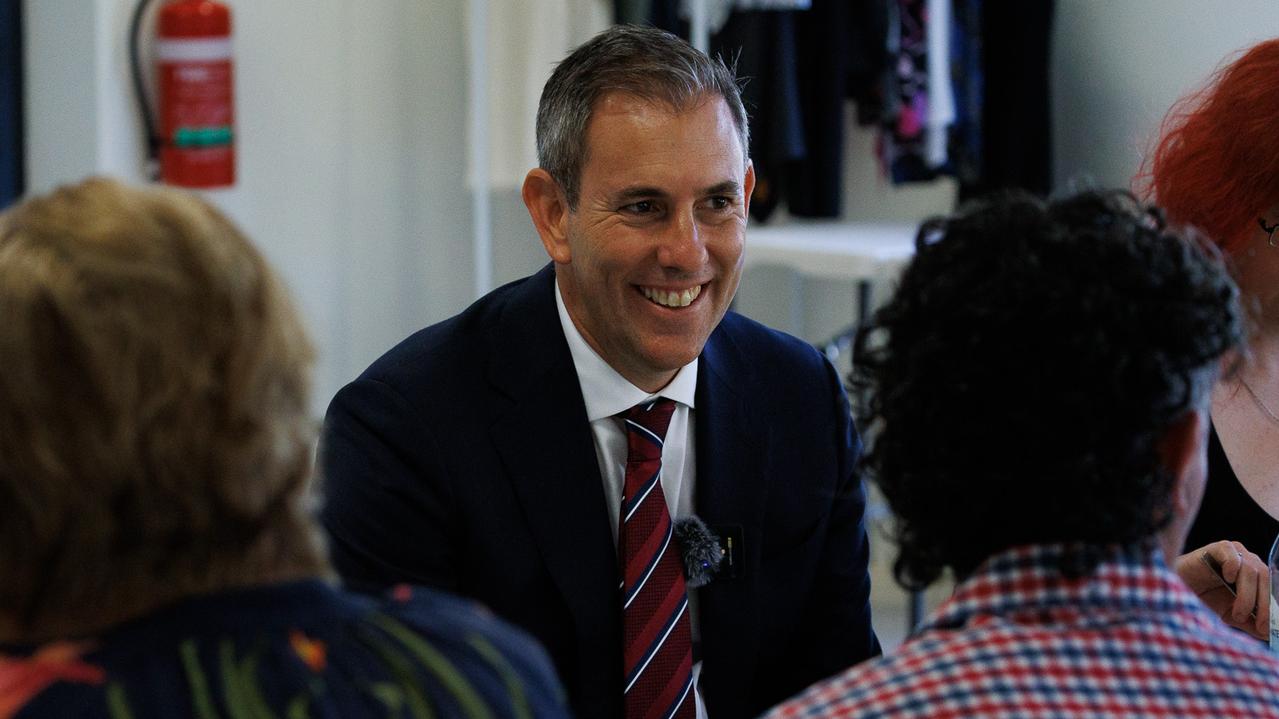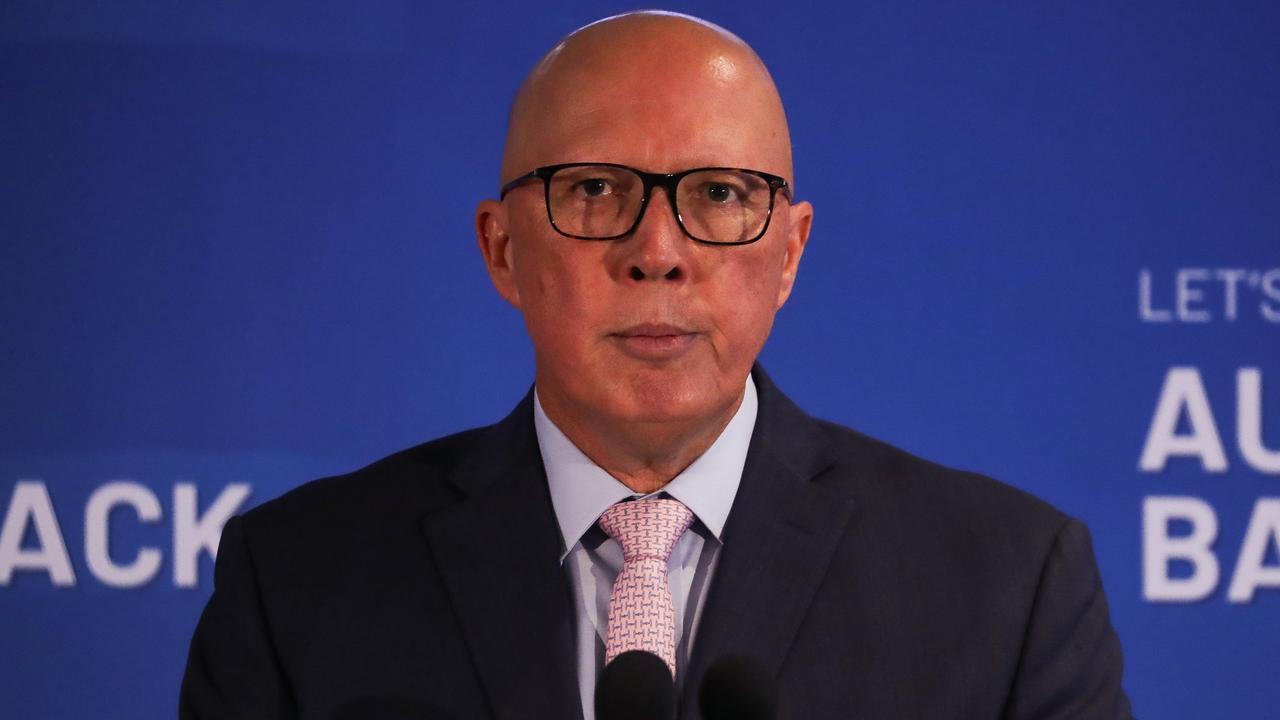Federal Budget 2017: Time to focus on some nation building
NOTABLE in the lead-up to this Budget is the shift from the bellicose rhetoric. Gone is the apocalyptic talk of debt and deficit disasters. Instead, an accounting treatment separating good debt from bad.

Federal Budget
Don't miss out on the headlines from Federal Budget. Followed categories will be added to My News.
- Budget: First homeowners to get help
- Coalition forecasts wrong by billions
- Uni funding to be cut by millions
TEMPORARY boom, permanent promises.
That’s how Deloitte Access Economics’ Chris Richardson sums up the story of Australia’s last decade and a half of Budget management.
“The last decade-and-a-half saw a temporary boom in revenues – notably profit taxes – that subsequently tanked. But whereas the impact of China and the resources boom on the Budget came and went, the impact of politicians’ promises has lingered.”
This has left us on the eve of a Budget expected to show little immediate improvement in Australia’s bottom line, and national debt continuing to climb at least until 2020-21.
What is notable in the lead-up to this Budget though is the shift from the somewhat bellicose rhetoric of recent years. Gone largely is the apocalyptic talk of debt and deficit disasters, and clumsy metaphors about maxing out the national credit card.
Instead, as Treasurer Scott Morrison has foreshadowed, we can expect to see a new accounting treatment which will separate good debt from bad debt. Here good debt is broadly classified as borrowings used to boost jobs and the economy such as infrastructure spending, while bad debt is the bonds we need to issue to cover recurrent spending in areas such as health and welfare.
This reflects the slow realisation that – short of the sort of savage spending cuts that proved so politically poisonous with the first Abbott government Budget of 2014 or, failing that, tax increases – there is no quick fix to the chronic gap between government revenue and spending.
As a result, Tuesday’s Budget is expected to see the so-called “zombie” savings measures of 2014 – $12.4 billion of cuts still on the books but locked by the Senate – finally removed from the accounts. Ultimately what we are looking at is a Budget that aims not to scare the proverbial horses in the form of the voting public, and one that will focus heavily on themes of security: national security, economic security, energy security and housing security.
Debt and deficit is now manageable over the medium term rather than a national emergency. Instead it is time to focus on some nation building while we trim the sails where, the Senate permitting, politics aren’t too treacherous.
BUDGET BOTTOM LINE
Economists are projecting a Budget deficit for 2016-17 of around $27.5 billion, which would mark a minor improvement from the $28.7 billion of red ink forecast in the Midyear Fiscal and Economic Outlook.
In the MYEFO statement the Government forecast a return to a wafer thin surplus by 2020-21, although many economists remain sceptical, with Westpac’s Bill Evans suggesting a more pessimistic forecast for commodity prices than that held by Treasury that will result in a deficit of about $5 billion by 2020-21.
The ongoing deficits will see gross borrowings peak at more than $600 billion by 2020 (from $420 billion at June 30, 2016). Net debt meanwhile is expected to reach about $370 billion, which to put it in perspective is less than 20 per cent of GDP, and still considerably lower than most of Australia’s OECD contemporaries.
REVENUE
In the past year or so, after insisting Australia’s fiscal challenge was primarily one of spending, there has been an increasing readiness to concede that we also have a revenue problem.
This has seen government receipts consistently undershoot Treasury forecasts for nearly a decade, and the prospect of a surplus become, despite promises, ever more elusive. As ANZ senior economist Cherelle Murphy notes: “There is a big difference between projections and results. In no year since the GFC has the Government been able to deliver public finances as good as previous Budgets projected.”
The problem right now is that while commodity prices may have recovered, and company profits are soaring – up 65 per cent in pre-tax terms in 2016 – much of this has already been factored in to MYEFO, and the profits are not translating through to tax receipts as companies absorb previous losses and write off the billions spent during the mining investment boom.
And while national income growth – again in headline terms – looks pretty positive, on the ground it is a different story, with wages growth, as Richardson puts it, “lower than a snakes belly”.
This, combined with low growth in full-time employment, feeds through to depressed income tax revenue – the largest single tax component of the Budget.
The Government has ruled out tax increases, such as reducing the CGT discount or tightening negative gearing rules, and previously killed off moves to raise and/or expand the GST.
Still, there may be some tinkering around the edges, with some speculation that the Medicare levy on high income earners might be expanded, in part to replace the temporary deficit repair levy which had seen the top marginal tax rate hiked from 45 to 47 per cent.
SPENDING
Here’s the rub. While government receipts are running at about 23.5 per cent of GDP, spending remains stubbornly close to 26 per cent, in no small part due to those permanent promises made when Treasury coffers were awash with cash in the boom years before the GFC.
Reining this in is difficult in the extreme, particularly given an often recalcitrant Senate and public opposition to having shibboleths like health care and pensions hacked into, at the same time as core spending pressures – the Gonski package being a case in point – are rising.
As Deloitte notes: “A swag of existing programs become more expensive further out in time – the NDIS, child care and paid parental leave, hospital and school funding, carer support, aged care, Medicare and the PBS, disability pensions, age pensions, universities and Defence.
“That means much of the Budget is already promised to grow fast, with the bulk of that pain falling just beyond the current forward estimates.”
SAVINGS MEASURES
Here it would appear the Government is taking a more cautious approach than it has in the past three years.
Already we know that higher education fees will rise, saving about $2.5 billion, while welfare savings add another $2 billion.
According to Westpac, other possibilities include an additional public service “efficiency dividend” (which last year netted $1.5 billion), possible tightening of payments to the states and changes to the Pharmaceutical Benefits Scheme.
Other areas that could be targeted include further measures to curb the cash economy, tightening work-related expense rules, a possible cap on the refundable research and development tax offset, and maybe moves to cap or reduce the amount of interest companies can deduct for interest paid on cross- border loans owed to related parties.
HOUSING AFFORDABILITY
This is arguably the single most vexed area of public policy at the moment. With Australia’s household debt (relative to income) now the second highest in the world after Switzerland, and our residential property – particularly the Sydney and Melbourne markets – consistently related as among the most unaffordable in the world, we have a problem.
The catch is that there is little, beyond perhaps winding back negative gearing and capital gains tax concessions – both of which it has ruled out – that a government can do, given the impact that interest rates combined with state and local government planning and tax regimes have on the market.
What economists expect though is a combination of measures to both boost supply and, if not address affordability per se, at least give first-home buyers a bit of a leg up into the market.
This is likely to see a revised public housing initiative, possibly via a bond aggregator scheme, combined with possible incentives for older couples to downsize the family home without jeopardising their retirement income from superannuation.
Also expected is some form of accelerated savings mechanism for first time buyers, possibly through a salary sacrificing scheme.
INFRASTRUCTURE
For a government keen to be perceived as pushing nation-building projects, but saddled with growing debt and persistent deficits, this is where the “good debt v bad debt” equation comes into play.
Already Canberra has said that it is prepared to fund development of Sydney’s second airport at Badgerys Creek at a cost of up to $6 billion, and is examining a $2 billion expansion of the Snowy Mountains Hydro-Electric Scheme.
Also on the cards is further commitment to the $10 billion inland rail corridor linking Melbourne to Brisbane.
Such projects are, as is the case with the NBN, likely to be funded off balance sheet with a mixture of debt and equity, and an expectation of future earnings streams and the potential to recoup capital through a later sale or partial privatisation.
Funding for Brisbane’s urgently needed Cross River Rail link remains in the “watch this space” category.
AAA CREDIT RATING
Most economists are fairly confident that our top tier rating is safe for the moment but vulnerable to changing circumstances.
In the meantime, according to Deloitte, the impact of the RBA’s rate cuts last year combined with the Chinese recovery have “Botoxed” the Budget.
“So it isn’t clear to us the AAA will be lost soon. Were it to happen, the initial trigger may actually be the debt of families rather than that of governments.”
It is this potential for unexpected shocks that has economists most worried, particularly given the partisan obstacles that lie in the way of meaningful reform.
“That,” as Richardson says, “leaves us unhappily equipped to rise to the challenge of getting our house in order.
“Heaven forbid a genuine crisis rocks up ...”
Originally published as Federal Budget 2017: Time to focus on some nation building


